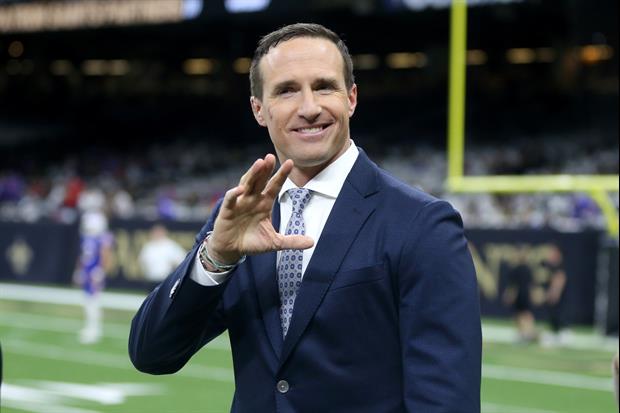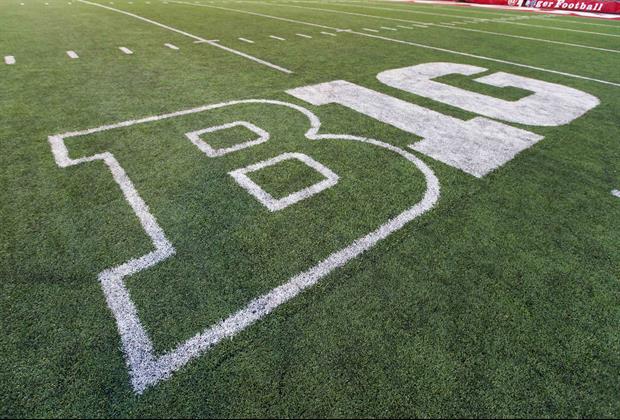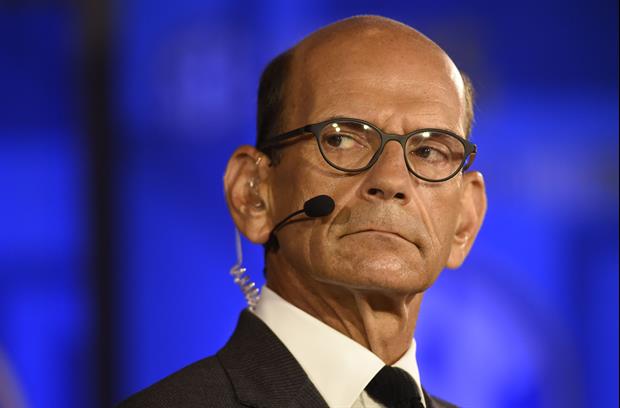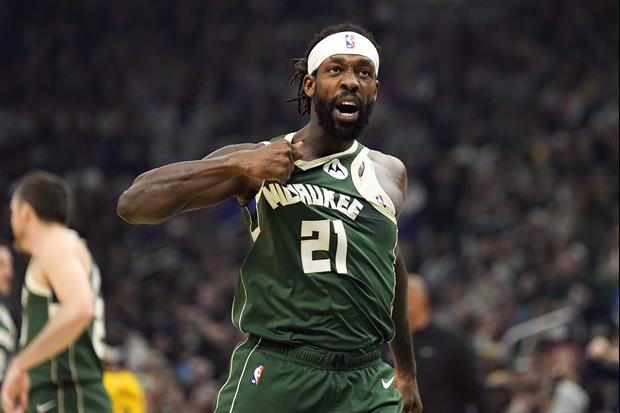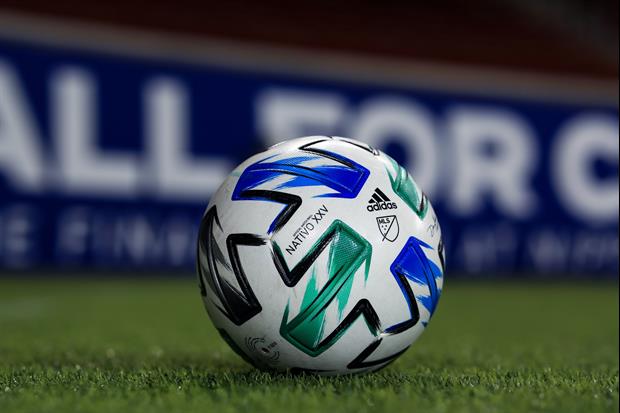| Favorite team: | USA |
| Location: | |
| Biography: | |
| Interests: | |
| Occupation: | |
| Number of Posts: | 52 |
| Registered on: | 6/28/2013 |
| Online Status: | Not Online |
Recent Posts
Message
College Football Luxury Tax and Salary Cap
Posted by Surd on 6/28/14 at 6:51 pm
Not sure if anyone is paying attention to the O'Bannon lawsuit. Judge won't issue ruling until August, but while presenting possible hypotheticals of what injunction may look like, she suggested possibility of luxury tax or salary cap to address NCAA's concerns of competitive balance if players receive payment.
Anybody here care if a portion of SEC revenue goes to help Sun Belt schools pay their players?
Anybody here care if a portion of SEC revenue goes to help Sun Belt schools pay their players?
re: Division IV: Good Or Bad For SEC?
Posted by Surd on 6/2/14 at 6:30 pm to RollTide1987
Well, I'm a little biased. I started 4 years in small college football, where we actually did only spend about 20 (maybe 25) hours a week on football. I'm a huge fan of bringing the Student back into student-athlete, and would love to see most of the proposals passed.
re: Division IV: Good Or Bad For SEC?
Posted by Surd on 6/2/14 at 6:23 pm to RollTide1987
quote:
So, in the long run, it will hurt the student athletes of the SEC because schools will make it so they are taking easy, non-helpful courses so as to keep them eligible for play.
Isn't that already happening?
You have to remember that the NLRB ruling at Northwestern, that football players are employers, was based on two primary things. Revenue generated and time spent generating that revenue. NCAA's "20 hour rule" didn't carry any weight with the labor board when it was shown how much actual time football players spend on football when all the "voluntary" workouts, team meetings, film study, and travel were added up.
The recommended time restrictions are primarily a response to the NLRB ruling, not at the SEC. Since the conferences currently spend the same amount of time on football, I just don't see how putting additional limitations on time spent on football puts the SEC at a disadvantage. All conferences would still be operating under the same rules.
The recommended time restrictions are primarily a response to the NLRB ruling, not at the SEC. Since the conferences currently spend the same amount of time on football, I just don't see how putting additional limitations on time spent on football puts the SEC at a disadvantage. All conferences would still be operating under the same rules.
The committee also has a history of rewarding money spent on stadium improvement. Washington just put $20 million into major renovations that completed this year. If the bids are close, expect that to be the trump card for UW.
re: So they ran a mock scenario for the upcoming playoff system and here is what ...
Posted by Surd on 5/25/14 at 2:06 pm to TigerCruise
Last year would have been interesting to see how it played out.
Florida State and Auburn would have made the playoffs.
Then I think it would have come down to picking two of Alabama, Michigan State, Stanford, and Baylor.
Florida State and Auburn would have made the playoffs.
Then I think it would have come down to picking two of Alabama, Michigan State, Stanford, and Baylor.
Pac-12 zooms past Big Ten, SEC in college sports revenue
Posted by Surd on 5/25/14 at 1:47 pm
In case anyone had any doubt as to why their cable bill is about to increase to fund the SEC Network...
LINK
LINK
quote:
The college athletics conference financial pecking order has received a jolt – the Pacific-12 Conference new federal tax return shows it had more revenue during the 2012-13 fiscal year than either the Big Ten or Southeastern Conference.
The Pac-12 reported $334 million in total revenue for a fiscal year ending June 30, 2013, the first that reflects the conference's 12-year, $3 billion TV rights deals with ESPN and Fox; the debut of the wholly conference-owned Pac-12 Networks; and operations of the conference's nascent marketing and media arm, Pac-12 Enterprises.
That total represents a $158.1 million increase in revenue over what the conference reported for the 2011-12 fiscal year and a more than tripling of the $111.8 million that the Pac-12 reported for 2010-11.
The Big Ten recently reported $318.4 million in total revenue for a fiscal year ending June 30, 2013. The SEC reported $314.5 million reported for a fiscal year that ended Aug. 31, 2013.
re: NIT Watch 2014 (artist formerly known as Bubble Watch)
Posted by Surd on 3/16/14 at 5:59 pm to Woopigsooie20
Here's the one site to correctly pick all 68 teams in the bracket.
NC State over SMU was the only real surprise from the consensus.
NC State over SMU was the only real surprise from the consensus.
re: Should the SEC hire and train their own basketball officials?
Posted by Surd on 2/7/14 at 5:03 pm to ProjectP2294
quote:
quote:
However, the SEC uses a single assigner who utilizes specific officials for SEC games.
This is something I didn't know. Thanks for the insight.
One of the benefits to be had by going to route I suggest is potentially increasing the pay for SEC officials, attracting better talent.
The scheduling process is very interesting. Some assigners assign for more than one conference. Most officials are scheduled by more than one assigner. And, just because an assigner uses you as one of their officials, it doesn't mean they will use you in all of the conferences they assign for.
Because an official doesn't want to accept an assignment from a lower paying conference before they know their schedule from the bigger conferences, the assigners schedule in serial. The big conference assigners (ACC, SEC, P12) send out their ref schedule a few months before the season. Then those refs will block out their schedule for the days they've been assigned, and then the next tier of conferences will assign. Often, your JUCO/DIII, assigners can't really set up their schedule until a couple weeks before the season. You're top officials may work 75-100 games in multiple conferences, and can gross over $200K for a season.
I don't know if pay is really the issue for attracting better talent, at least at the SEC and other Major conference level, they are making very good money. One issue, is it takes a very thick skin to be an official as it is one of those jobs that you can only do wrong in most people's eyes. Second, you can't grow a good official over night. Even the most instictive and talented officials made plenty of mistakes early on, and took years before they had the experiece to work SEC games. And the pay at those lower conferences is not great as they gain that experience.
re: Should the SEC hire and train their own basketball officials?
Posted by Surd on 2/7/14 at 3:17 pm to ProjectP2294
Quick background: My wife was an Acad-All American Point Guard, became a college basketball coach, and then became an official as my job moved us too much (and babies came) for her to continue coaching.
1. You are talking Semantics. Yes, all officials pretty much everywhere in the U.S. are independent contractors. However, the SEC uses a single assigner who utilizes specific officials for SEC games. The assigner works closely with the SEC for training and managing that group of officials. Between every season, the assigner (based on their own evaluations and input from the conference/coaches), may not bring back a few officials and will add a few highly regarded officials working up from lower leagues. However, politics/friendships/reputations, can play, and like everywhere in our economy/culture, assigners can be reluctant to let go of an established official that has slipped a bit. Also, the number of games a ref is assigned can be greatly influenced by the conference and coaches based on who they think are the best officials. If a conference doesn't like the job their assigner is doing in selecting and scheduling refs, they will go get a different assigner.
2. The life of a certified official begins with high school ball (usually JV and lower). As they get better, they'll get varsity games, and then maybe playoffs. Some officials don't like the travel of college, and will stay at the high school level. But a good high school official can get picked up by a lower division (NAIA, JUCO, DIII) assigner. These games don't pay great, and the pay doesn't always even cover travel costs. These levels are putting in your dues of hoping to get picked up at a higher level. Assigners talk with each, and the best officials (or sometimes well connected) get picked up at DII, and then small DI. Finally, the officials that get picked up by the SEC assigner has been officiating for a long time, and has done very well through out their career. Big time DI college basketball pay over $1000 per game (I believe ACC refs make upwards of $3000 per conference game). But this is also the pinnacle (unless they do the flip to NBA), and some officials can lose the drive that got them to the top in the first place. But for the most part, these are the best officials in the country.
3. Officials work extremely hard at their trade. I can tell that from first hand experiece. They film study, and are critical of their own performances, and study their rule books, and get tested annualy. No official has ever, or will ever call a perfect game. Basketball is an extremely tough sport to officiate. The difference between a block and a charge can be fractions of a second.
4. Officials don't make the rules, they enforce them. Every year they have to incorporate new rules (or emphasis) items as handed down by the NCAA and the conferences.
5. I use to yell at officials (especially when my wife was a coach). Watching my wife go thru the process has given me a deep respect for those that do it. Often times, when a fan is upset, it is their own misunderstanding of the rules. The other night, we were watching a basketball game together where the announcers were talking about a "bad" call agaisnt the offense on an illegal screen because the offensive player was clearly set. My wife then explained why the announcers were wrong, because the play was in the backcourt and apparently the rulebook doesn't allow a "blind" screen and the defender needed so many steps to be able to get his head around and see the screen coming. Bottom-line, this happens all the time when we are at games or watching games at home and the fans get mad, and see'll explain why the call was in fact correct. Even coaches have misunderstandings of the rules.
6. Having lived in several different regions, I have noted a difference in the initial development of officials. The Mid-Atlantic was extremely impressive. I haven't been very impressed with the west coast, and she wasn't officiating when we lived in the south so I'm not sure there. I think the ACC and Big East have the best officials, and I attribute it to their system, especially in the first couple years of development and training. It is similar to the South having the best football players. It starts in Pop Warner and high school, long before the kids get to the SEC. If you want better officials in the south, start with how they are being developed as high school officials... and then wait 20 years for that trickle up effect to get to the SEC. Or better yet, stop your whining, sign up to become a local high school official, be good enough to get to the SEC, make a difference while making over $1000/game.
1. You are talking Semantics. Yes, all officials pretty much everywhere in the U.S. are independent contractors. However, the SEC uses a single assigner who utilizes specific officials for SEC games. The assigner works closely with the SEC for training and managing that group of officials. Between every season, the assigner (based on their own evaluations and input from the conference/coaches), may not bring back a few officials and will add a few highly regarded officials working up from lower leagues. However, politics/friendships/reputations, can play, and like everywhere in our economy/culture, assigners can be reluctant to let go of an established official that has slipped a bit. Also, the number of games a ref is assigned can be greatly influenced by the conference and coaches based on who they think are the best officials. If a conference doesn't like the job their assigner is doing in selecting and scheduling refs, they will go get a different assigner.
2. The life of a certified official begins with high school ball (usually JV and lower). As they get better, they'll get varsity games, and then maybe playoffs. Some officials don't like the travel of college, and will stay at the high school level. But a good high school official can get picked up by a lower division (NAIA, JUCO, DIII) assigner. These games don't pay great, and the pay doesn't always even cover travel costs. These levels are putting in your dues of hoping to get picked up at a higher level. Assigners talk with each, and the best officials (or sometimes well connected) get picked up at DII, and then small DI. Finally, the officials that get picked up by the SEC assigner has been officiating for a long time, and has done very well through out their career. Big time DI college basketball pay over $1000 per game (I believe ACC refs make upwards of $3000 per conference game). But this is also the pinnacle (unless they do the flip to NBA), and some officials can lose the drive that got them to the top in the first place. But for the most part, these are the best officials in the country.
3. Officials work extremely hard at their trade. I can tell that from first hand experiece. They film study, and are critical of their own performances, and study their rule books, and get tested annualy. No official has ever, or will ever call a perfect game. Basketball is an extremely tough sport to officiate. The difference between a block and a charge can be fractions of a second.
4. Officials don't make the rules, they enforce them. Every year they have to incorporate new rules (or emphasis) items as handed down by the NCAA and the conferences.
5. I use to yell at officials (especially when my wife was a coach). Watching my wife go thru the process has given me a deep respect for those that do it. Often times, when a fan is upset, it is their own misunderstanding of the rules. The other night, we were watching a basketball game together where the announcers were talking about a "bad" call agaisnt the offense on an illegal screen because the offensive player was clearly set. My wife then explained why the announcers were wrong, because the play was in the backcourt and apparently the rulebook doesn't allow a "blind" screen and the defender needed so many steps to be able to get his head around and see the screen coming. Bottom-line, this happens all the time when we are at games or watching games at home and the fans get mad, and see'll explain why the call was in fact correct. Even coaches have misunderstandings of the rules.
6. Having lived in several different regions, I have noted a difference in the initial development of officials. The Mid-Atlantic was extremely impressive. I haven't been very impressed with the west coast, and she wasn't officiating when we lived in the south so I'm not sure there. I think the ACC and Big East have the best officials, and I attribute it to their system, especially in the first couple years of development and training. It is similar to the South having the best football players. It starts in Pop Warner and high school, long before the kids get to the SEC. If you want better officials in the south, start with how they are being developed as high school officials... and then wait 20 years for that trickle up effect to get to the SEC. Or better yet, stop your whining, sign up to become a local high school official, be good enough to get to the SEC, make a difference while making over $1000/game.
re: How was Oregon able to use Nike money to start winning, but no Arky with Wally?
Posted by Surd on 2/3/14 at 8:15 pm to RBWilliams8
Oregon's transformation is actually really interesting because it has been a 20 year process, and the Uncle Phil money is a bit too simple of an answer. Despite one of the more famous donors, Oregon still doesn't typically crack the top 10 in total annual donations, as your traditional schools still have much larger donor bases. But his money at least gets them close enough to compete.
The funding and facilities have helped, but so did one of the best "branding" campaigns (think audacious uniforms that kids loved), coaching stability (they haven't hired a head coach from outside their organization since 1977), and timing and program inertia.
I mention timing because Oregon was one of the biggest benefactors of the 85 scholarship limit that came into effect in 1994, which had a trickle down effect of talent to less traditional teams. Before 1994, they finished in the top 25 twice... ever. Since 1994 they've had 13 top 25 finishes (tied for 10th over that span). They also maintained positive trajectory over the last 20 years, which has helped grow the brand. The 2000 (#7) and 2001 (#2) seasons were the breakthrough seasons that opened the doors to bring in guys like Haloti Ngata and other better talent. And then Chip Kelly was the homerun coach that elevated them to a regular top 5 team and got them a seat at the table with the elite programs. That has further helped recruiting, where they are likely to pull in their 5th straight top 20 class (doesn't sound like much, until you realize they only had maybe one top 20 class before 2010).
Bottom-line, it takes more than just money to transform a program, but it probably is one of the essential ingredients.
The funding and facilities have helped, but so did one of the best "branding" campaigns (think audacious uniforms that kids loved), coaching stability (they haven't hired a head coach from outside their organization since 1977), and timing and program inertia.
I mention timing because Oregon was one of the biggest benefactors of the 85 scholarship limit that came into effect in 1994, which had a trickle down effect of talent to less traditional teams. Before 1994, they finished in the top 25 twice... ever. Since 1994 they've had 13 top 25 finishes (tied for 10th over that span). They also maintained positive trajectory over the last 20 years, which has helped grow the brand. The 2000 (#7) and 2001 (#2) seasons were the breakthrough seasons that opened the doors to bring in guys like Haloti Ngata and other better talent. And then Chip Kelly was the homerun coach that elevated them to a regular top 5 team and got them a seat at the table with the elite programs. That has further helped recruiting, where they are likely to pull in their 5th straight top 20 class (doesn't sound like much, until you realize they only had maybe one top 20 class before 2010).
Bottom-line, it takes more than just money to transform a program, but it probably is one of the essential ingredients.
Interesting etymology on the 12th man here.
Questions the historical accuracy of the Texas A&M version, while presenting a lot of other historical usage of the term. A&M should feel fortunate that they were able to trademark the term, all things considered.
Questions the historical accuracy of the Texas A&M version, while presenting a lot of other historical usage of the term. A&M should feel fortunate that they were able to trademark the term, all things considered.
re: When and why did the illegal substitution rule for defense change?
Posted by Surd on 1/1/14 at 7:05 pm to Antonio Moss
quote:
If the defense lines up with 12, they have three seconds to get the extra man to run off the field
Correct. Illegal substitution is a deal ball foul, and 5 yard penalty. In college (not NFL), if a play is run with 12 men on the field, that is illegal participation and a 15 yard yard penalty. The irony is that illegal participation generally can only occur if the refs didn't blow the play dead to call illegal substitution to begin with.
If he keeps up his current pace, he would have thrown the most interceptions by a Heisman winner since Ty Detmer, and 3rd highest total ever.
quote:
Stanford still top 10 with two losses to unranked (at the time) teams, what in the hell?
Because they have 5 wins against (at the time) ranked teams.
Here are the average players per school for the big 5 conferences.
SEC - 29.6
P12 - 25.6
ACC - 24.5
B1G - 23.4
B12 - 18.4
No surprises at the top, unless you expected a bigger delta from SEC to everyone else. Perhaps a surprise with the Big-12 at 5th and how far behind the other 4 they are.
SEC - 29.6
P12 - 25.6
ACC - 24.5
B1G - 23.4
B12 - 18.4
No surprises at the top, unless you expected a bigger delta from SEC to everyone else. Perhaps a surprise with the Big-12 at 5th and how far behind the other 4 they are.
re: Top 25 Schools with most active NFL players
Posted by Surd on 11/12/13 at 1:22 am to Landsharks
Duplicate
re: Top 25 Schools with most active NFL players
Posted by Surd on 11/12/13 at 1:17 am to Landsharks
quote:
I read it, and I regret it.
Yeah, sorry. I know it is an Iowa love fest. But pulling that much data together to compare recruiting rankings to NFL players drafted is a nice piece of work.
re: Top 25 Schools with most active NFL players
Posted by Surd on 11/12/13 at 12:51 am to dbt_Geaux_Tigers_196
On Iowa and California success in producing NFL players, I recommend reading this.
quote:
Rutgers
Seriously, Ray Rice and..... who else? Taking a peak at LINK, only 8 of their active players have been starters in the NFL.
Popular

 5
5

